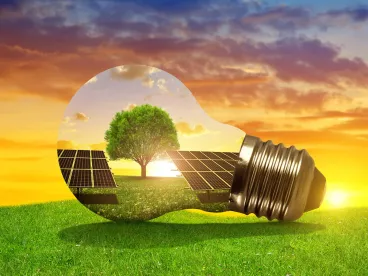The low-income communities bonus credit (the LIC Bonus), which was introduced by the Inflation Reduction Act of 2022 (the IRA), provides an enhanced tax credit for renewable energy projects located in designated low-income communities. The LIC Bonus is available for wind and solar projects that qualify for the investment tax credit (ITC) under Section 48 of the Internal Revenue Code of 1986, as amended (the Code). Notably, eligibility for the LIC Bonus requires an allocation of a portion of the annual “environmental justice solar and wind capacity limitation” (Capacity Limitation) prescribed by newly enacted Section 48(e) of the Code, as further described below, to the applicable project.
On February 13, 2023, the Treasury Department and Internal Revenue Service (IRS) established the program for the allocation of Capacity Limitation under the LIC Bonus in Notice 2023-17 (the Notice).[1] The Notice also provides initial guidance regarding the overall design of the program, the application process, and the additional criterial that will be considered by the IRS in determining which projects will receive an allocation of Capacity Limitation. The Notice states that more specific details as to the procedures for the application process for the 2023 calendar year, and other information necessary to apply for an allocation of Capacity Limitation, will be provided in forthcoming guidance, and that the Treasury Department will monitor and assess whether modifications to the LIC Bonus program should be made for the 2024 calendar year.
The LIC Bonus under the IRA
Under new Section 48(e) of the Code, enacted as part of the IRA, a qualified wind or solar facility eligible for the ITC can receive up to a 10- or 20-percentage point increase to the energy percentage used to calculate the ITC (ITC Rate) applicable to eligible property, including energy storage technology, that is part of the qualified facility (determined in the manner described below).
Importantly, the increase in the ITC Rate with respect to eligible property that is part of such facility cannot exceed the amount that bears the same ratio to the amount of (i) the Capacity Limitation allocated to the facility, divided by (ii) the total megawatt nameplate capacity of such facility, as measured in direct current. For this purpose, Section 48(e) of the Code requires the establishment of a program for the allocation of Capacity Limitation with 180 days of the enactment of the IRA. The Capacity Limitation available for allocation for each of calendar year 2023 and 2024 is 1.8 gigawatts of direct current capacity, with any unallocated Capacity Limitation for calendar year 2023 available for carryover to the 2024 calendar year.
Under Section 48(e)(2) of the Code, a qualified wind or solar facility generally means a facility that (i) generates electricity solely from wind or solar energy, (ii) has a maximum net output of less than five (5) megawatts (as measured in alternating current), and (iii) falls with one of the following four (4) categories (each, a Facility Category):
-
Category 1: A facility located in a “low-income community,” which generally includes any population census tract where (i) the poverty rate for such tract is at least 20 percent, (ii) in the case of a tract not located within a metropolitan area, the median family income for such tract does not exceed 80 percent of statewide median family income, or (iii) in the case of a tract located within a metropolitan area, the median family income for such tract does not exceed 80 percent of the greater of the statewide median family income or the metropolitan area median family income.
-
Category 2: A facility located on “Indian land” as defined in § 2601(2) of the Energy Policy Act of 1992 (25 U.S.C. 3501(2)).
-
Category 3: A facility that is part of a “qualified low-income residential building;” that is, a facility installed on a residential rental building participating in an affordable housing program[2] if the financial benefits of the electricity produced by such facility are allocated equitably among the occupants of the dwelling units of such building.
-
Category 4: A facility that is part of a “qualified low-income economic project” where at least 50 percent of the financial benefits of the electricity produced by such facility are provided to households with income of less than 200 percent of the poverty line applicable to a family of the size involved, or less than 80 percent of area median gross income.
A Category 1 or Category 2 facility that is not also a Category 3 or Category 4 facility is eligible for up to a 10-percentage point increase in the ITC Rate on eligible property. An increase of up to 20-percentage points in the ITC Rate on eligible property is available to a facility described in Category 3 or Category 4.
To qualify for the LIC Bonus, eligible property at a qualified wind or solar facility must be placed in service within four (4) years after the date on which an applicant is notified of an allocation of Capacity Limitation to the facility. Eligible property is considered placed in service in the earlier of (i) the taxable year in which, under the applicant’s depreciation practice, the period for depreciation of the property begins, and (ii) the taxable year in which the property is placed in a state of readiness and availability for a specifically assigned function.[3] In the case of a lessor making an election to pass-through the ITC to a lessee under Treasury Regulation Section 1.48-4, however, eligible property is considered placed in service in the taxable year when possession is transferred to the lessee.
Initial Guidance on Design and Implementation of LIC Bonus Program
Objectives
The Notice provides that the program’s broad goals are to increase adoption of, and access to, renewable energy facilities in low-income and other communities with environmental justice concerns; encourage new market participants; and provide social and economic benefits to individuals and communities that have been historically overburdened with pollution, adverse human health or environmental effects, and marginalized from economic opportunities.
Category Allocation for Calendar Year 2023
For calendar year 2023, the total Capacity Limitation of 1.8 gigawatts of direct current capacity will be divided among the four Facility Categories as follows:
|
Category 1: Located in a Low-Income Community |
700 megawatts |
|
Category 2: Located on Indian Land |
200 megawatts |
|
Category 3: Qualified Low-Income Residential Building Project |
200 megawatts |
|
Category 4: Qualified Low-Income Economic Benefit Project |
700 megawatts |
As noted earlier, any Capacity Limitation that is not awarded for calendar year 2023 will be available for allocation in calendar year 2024.
Evaluation Criteria
Forthcoming guidance will set forth the additional criteria to be taken into account in determining allocations of Capacity Limitation among proposed projects, which may include the following:
-
Ownership or development of facilities by community-based organizations and mission-driven entities;
-
Impact of the project on encouraging new market participants;
-
Significance of benefits to low-income communities and individuals marginalized from economic opportunities, and
-
Degree of commercial readiness of the project.
Allocation Process
In the event that applications selected for allocations of Capacity Limitation involve facilities with a collective total megawatt nameplate capacity that exceeds the Capacity Limitation reserved for each Facility Category, the Notice indicates that a lottery or other processes may be used to allocate the Capacity Limitation among the applicants. Additionally, if a Facility Category has excess Capacity Limitation, then such excess may be reallocated to the other Facility Categories to maximize 2023 calendar year allocations.
Eligible Applicants
Under the Notice, only the owner of a facility may apply for an allocation of Capacity Limitation. For each facility owned by an applicant, the applicant may apply for an allocation of Capacity Limitation in only one Facility Category for calendar year 2023. Applicants that do not receive an allocation of Capacity Limitation will be permitted to apply for future allocations after calendar year 2023, but no waitlist will be created from calendar year 2023 applications that do not receive an allocation of Capacity Limitation.
Phased Allocation Approach
For calendar year 2023, the Notice contemplates a phased allocation approach with multiple 60-day application windows. The first window will include applications for facilities in Category 3 and Category 4 in the third calendar quarter of 2023. Applications for facilities in Category 1 and Category 2 will be accepted during a later window to be announced in subsequent guidance.
Program Administration
The Notice designates the Department of Energy (DOE) as the program administrator. In such capacity, the DOE is expected to review applications and make recommendations for allocations to the IRS. The DOE also will be responsible for handling any lottery or other administrative aspects of the allocation process. Based on the DOE’s recommendations and the results of the allocation process, the IRS will accept or reject an applicant’s request for an allocation of Capacity Limitation and notify the applicant of its decision. An acceptance notification will state the amount of Capacity Limitation allocated to the applicant, which will not exceed the nameplate capacity of the facility (as measured in direct current).
Effect of Allocation
As a final point, the Notice cautions that the allocation of an amount of Capacity Limitation by the IRS should not be considered a determination that the facility will qualify for the ITC or the LIC Bonus under the generally applicable statutory requirements.
FOOTNOTES
[1] A comparable program will be available for the clean electricity investment credit under Section 48E of the Code beginning in calendar year 2025. The Notice, however, only addresses the program for LIC Bonus on the ITC under Section 48 of the Code for calendar years 2023 and 2024.
[2] An affordable housing program includes any of the following: (i) a covered housing program (as defined in § 41411(a) of the Violence Against Women Act of 1994 (34 U.S.C. 12491(a)(3)), (ii) a housing assistance program administered by the Department of Agriculture under title V of the Housing Act of 1949, (iii) a housing program administered by a tribally designated housing entity (as defined in § 4(22) of the Native American Housing Assistance and Self-Determination Act of 1996 (25 U.S.C. 4103(22)) and (iv) such other affordable housing programs as the Secretary may provide.
[3] In the case of energy generation facilities, case law and IRS authorities typically consider whether the following events have occurred to determine whether a facility is “placed in a state of readiness and availability for a specifically assigned function”: (i) the approval of required licenses and permits for the facility; (ii) passage of control of the facility to the applicable project company; (iii) completion of critical tests; (iv) commencement of daily or regular operations; and (v) synchronization into a power grid for generating electricity to produce income. No single factor is intended to be dispositive.





 />i
/>i

